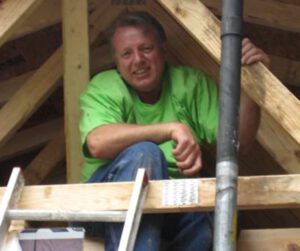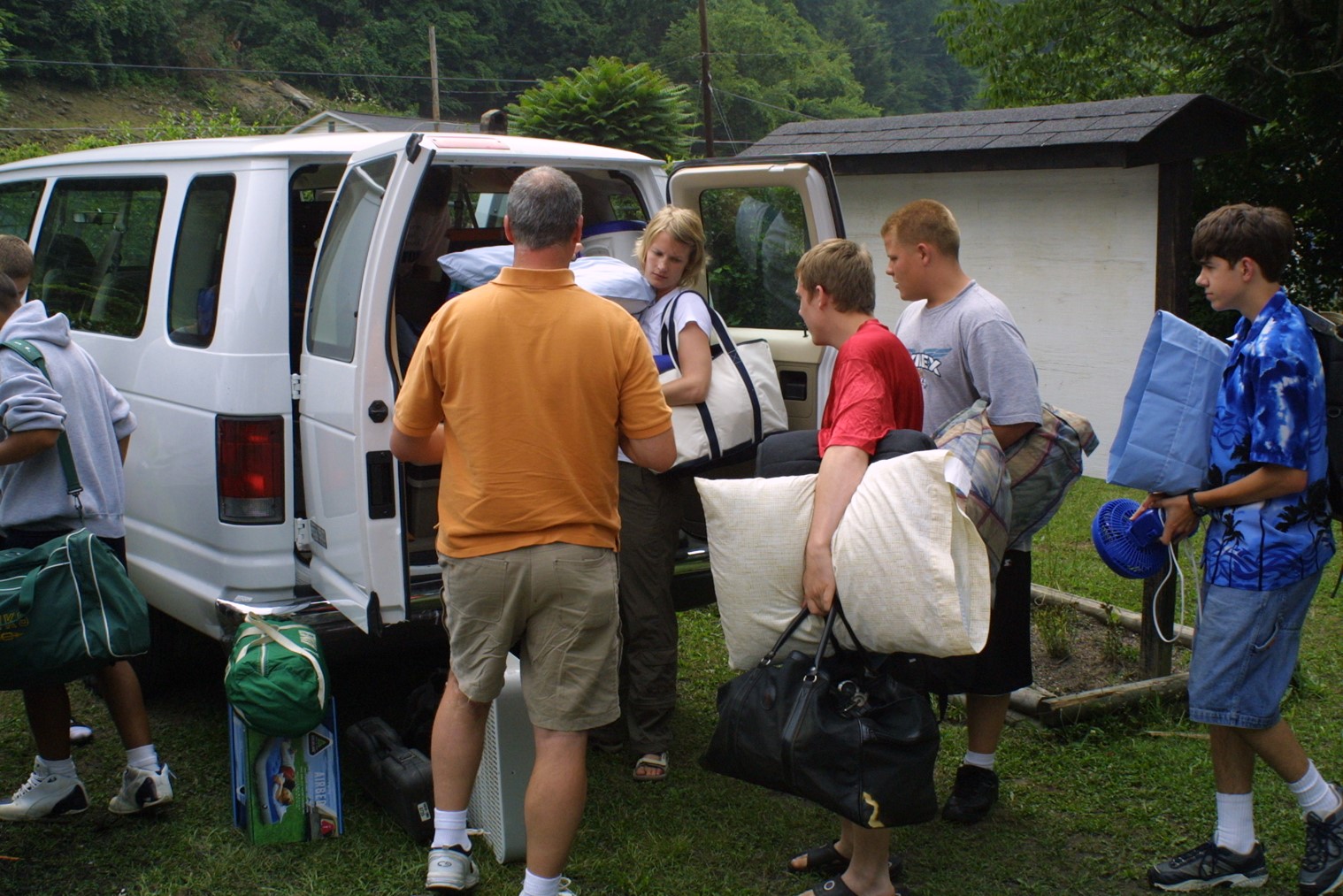It was 2006. Summer was underway with longer days and temperatures. A typical summer — except that this summer would be different. A few months earlier, I signed up to be an adult volunteer to help our youth ministry leaders with a trip to West Virginia.
That morning we left just as the sun was just starting to rise in the East. The weather was cooperating. And so were the two dozen very sleepy teenagers piled into the two large vans we rented for the trip.
For me, this trip was several years in the making. My oldest daughter, Nicole, made four trips like this one with the youth of our church. Each of her four summers of high school featured a week in the Appalachians, where she worked alongside her friends, repairing houses. Each time I heard a story about the joy that helping others brought to the giver, I longed to feel that same joy.
At the end of Matthew’s Gospel, we find instructions left by Jesus for all who choose to follow His way of life. These instructions are often referred to as the Great Commission. This label is insider speak for answering the question now what?
“Now what, Jesus?” we ask. Now that we know God lived among people. Now that Jesus shared the mind and heart of God with us, what do we do now?
Go and make disciples of all the nations…Teach these new disciples to obey all the commands I have given you.
Matthew 28:19-20
Now that you know that God has big plans for you. Now that you know God’s plans for you are for your prosperity, for your joy, and for your need to feel loved, what do you do with this knowledge?
Here at Asbury, we refer to the answer to this now-what question as our next step. What is the next step you are willing to take now that you know that God loves you so much?
The answer to this question often eludes even the most faithful followers of Christ. This happens for a lot of reasons. My late father might refer to most of this well-thought-out, carefully crafted, perfectly logical reasons as excuses.
Jesus left us with two primary tasks that are to occupy us for the rest of our lives. The first is to share the good news that God loves every one of us. This one should be easy. Most of us love to talk about ourselves, our worries, our problems, and how wrong the world has treated us. So talk.
As you talk, keep in mind that each sentence that comes from your lips is accompanied by breaths of air traveling into your lungs and providing oxygen to your body. Without this simple process of breathing, you wouldn’t be able to speak.
If you can’t imagine any other way in which God has blessed you, then remember that you are still breathing.
Meanwhile, every minute you’re telling others about your struggle, your heart pumps blood to every part of your body. How blessed are you feeling now?
Granted that these are blessings that every living person and animal receives, so you may not feel unique enough with just these two blessings. If this describes you, then how about this — what is your superpower? We each have a superpower or two. Special abilities that we do a bit better than most others.
Don’t know your superpower? Ask your friends and do the listening while they speak, and you eventually learn why they’re willing to hang out with you.
Share what you learn about the ways that God blesses you. This is the story that is uniquely yours to tell. This is how the world learns about Jesus Christ — from your stories.
The second instruction Jesus gives us in this part of Matthew’s Gospel is to teach others about Him. This one sounds harder to most of us? “But I’m not a teacher?” we exclaim. “Oh, but you are,” Jesus rebuts our excuse.
 Whenever we use our superpowers to help others, we are teaching them about Jesus Christ. While it is more effective to give Jesus credit rather than clam it for ourselves, keep on doing, and the words will soon follow.
Whenever we use our superpowers to help others, we are teaching them about Jesus Christ. While it is more effective to give Jesus credit rather than clam it for ourselves, keep on doing, and the words will soon follow.
So what does this have to do with building and being a bridge for racial reconciliation?
Tell your story. Perhaps the story you tell is about what you’ve learned over these past ten weeks about bridge-building. Perhaps your story is how ashamed you felt when you realized how humans were captured and forced to help build this nation but denied the benefits of their labor.
How did the story of George Floyd’s death under the knee of a police officer affect you personally? How did you feel when you learned that people of color are substantially more likely to be stopped by police, arrested, and lose their lives in the process? How did you feel when you finally realized that the common denominator was skin color?
The next step for a few of us may be bold and brilliant. One or more of us may start or join a Be-the-Bridge group. One or more of us may advocate for equitable justice and reparations. Most of us may simply be better informed and tell others what we learned. And some of them may become bridges for racial reconciliation.
There is a constant and persistent dialogue taking place around us. God’s Spirit whispers and nudges, coax and encourages each of us to go and do things that we otherwise wouldn’t do. Yet, when we start paying attention, and more importantly, when we take that next step, we discover an otherwise elusive joy. So why does it take us so long?
Latisha Morrison, in her book, Be the Bridge, writes that “So many of us hide little flickers of hope inside our hearts, and we ignore the small nudges from God, nudges pushing us to change the direction of our lives.” And therein lies the problem.
Latasha reminds us that “when we don’t engage God…we end up carrying on in the status quo, even if it’s not the right thing, the most just thing.” In other words, “it’s easy to mistake being still with complacency, to mistake waiting with hiding.” Change is hard enough, but when the pathway to change involves guilt, shame, and regret, it’s hard to take any step in that direction. Even if it’s the right direction to go.
The trial of former Minneapolis Police Officer Derek Chauvin for the murder of George Floyd is nearing its conclusion. Meanwhile, a white police officer killed Daunte Wright, claiming she mistakenly pulled out her gun as she reached for her taser. Perhaps this is what happened. Unfortunately, the track record of law enforcement across the country sheds doubt on her claim.
Would the police officer take the same action without regard to the color of Daunte’s skin?
Sadly, we know that history suggests an answer based on prejudice and a precedent of injustice. Skepticism is justified.
There is bridge-building work to be done. Bridges that allow others to cross the voids that divide us. Bridges that we build through truth-telling, lamenting, and remorse. Bridges help us push through the guilt and shame of our history of racial injustice. Bridges that lead us to confession and repentance.
Along with others who dare to step onto the bridges of reconciliation, we can work together to make reparations. Together we can right the wrongs perpetrated by those who came before us — and continued by our own willingness to accept ongoing, systemic inequities.
Perhaps one of you is called to help others become bridges of reconciliation. As we reach the end of our journey together that we called Bridges, my challenge is to make this a new beginning to a journey towards wholeness—a journey towards reconciliation.
Next week, we begin a new series we are calling Living water. Our primary subject matter is food. How we grow it, where we get our food, and how we treat creation in the process. Be sure to request your copy of Joel Salatin’s book, The Marvelous Pigness of Pigs. And join us each Wednesday at Noon for Book Club and each Sunday at 10:30 am for New Beginnings.
We have a new button on the homepage of our website – Click here to watch. This button takes you to a viewer to allow you to join live or watch later in the week. We’re also live on Facebook and our newly launched YouTube channel. You can find these links along with more information about us on our website at FlintAsbury.org.
A reminder that we publish this newsletter that we call the Circuit Rider each week. You can request this publication by email. Send a request to info@FlintAsbury.org or let us know when you send a message through our website. We post an archive of past editions on our website under the tab, Connect – choose Newsletters.
Pastor Tommy
1 Most of the content for our series comes from Latasha Morrison, Be the Bridge: Pursuing God’s Heart for Racial Reconciliation. Yates & Yates and Penguin Random House, 2019.

